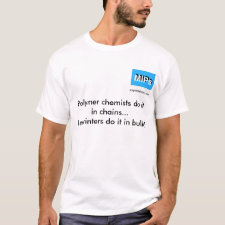
Authors: Yoshikawa M, Higuchi A
Publication date: 2013
Chapter title: Enantioselective Membranes.
DOI: 10.1002/9781118522318.emst131
Book title: Encyclopedia of Membrane Science and Technology
Editors: Hoek EMV, Tarabara VV
Publisher: John Wiley & Sons, Inc.
ISBN: 9781118522318
Abstract: The enantioseparation (optical resolution or chiral separation) of one specific enantiomer from others is in demand in the pharmaceutical production industry because most pharmaceuticals are stereoisomers, with each enantiomer possessing different biological activity. There is considerable demand for separation techniques appropriate for the large-scale resolution of chiral molecules. Enantioseparation of racemic mixtures of pharmaceuticals through enantioselective (chiral) or achiral polymeric membranes with or without a chiral selector is a desirable system for future commercial application(s). This article describes several polymeric materials for the enantioselective (chiral) separation of pharmaceuticals. Enantioselective membranes were prepared from chiral polymers from which enantioselectivity was generated from chiral carbons in the main chain. However, it is rather difficult to generate enantioselective membranes with high selectivity from chiral polymers alone because the racemic penetrants interact with the flexible side chains of the membranes. Therefore, enantioseparation membranes were prepared using polymers with a chiral branch. The chiral branch, which possesses the ability to specifically interact with drugs, was immobilized in enantioseparation membranes. Cyclodextrins (CDs), crown ether derivatives, albumin, and DNA have all been typically selected as stereoselective ligands in enantioseparation membranes. Nanofiber membranes, electrospun from enantioselective polymers, have also been developed for use in enantioselective membranes that were prepared using recent developments in nanotechnology and should be useful for efficient enantioseparation because of high flux and high enantioselectivity. A molecularly imprinted polymeric membrane, formed by interactions with a ''template'' chiral molecule, has also been reported to serve as an enantioselective membrane, although the polymer composing the enantioselective membrane did not contain any chiral molecules. There are two basic methods of preparing molecularly imprinted membranes: covalent and noncovalent molecular imprinting. In both methods, the template molecules are selected for their interactions with the functional group of the imprinted polymeric membranes, and the templates are subsequently removed from the membranes. Finally, this article discusses future trends in polymeric materials for enantioselective membranes
Template and target information: Review - enantioselective membranes
Author keywords: enantioselective membrane, chiral separation, enantioseparation, ultrafiltration, dialysis, nanofiber, Separation Factor, molecularly imprinted membrane



Join the Society for Molecular Imprinting

New items RSS feed
Sign-up for e-mail updates:
Choose between receiving an occasional newsletter or more frequent e-mail alerts.
Click here to go to the sign-up page.
Is your name elemental or peptidic? Enter your name and find out by clicking either of the buttons below!
Other products you may like:
 MIPdatabase
MIPdatabase









